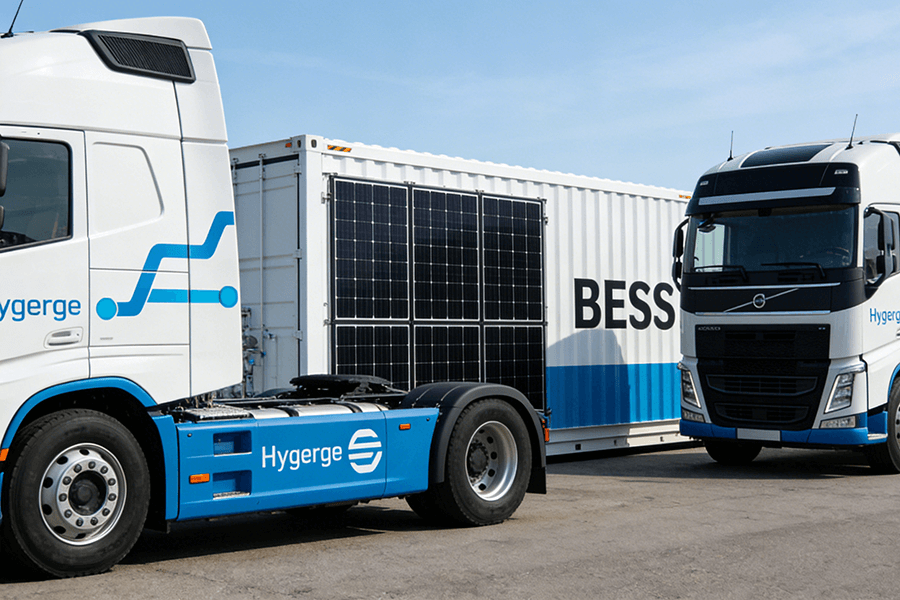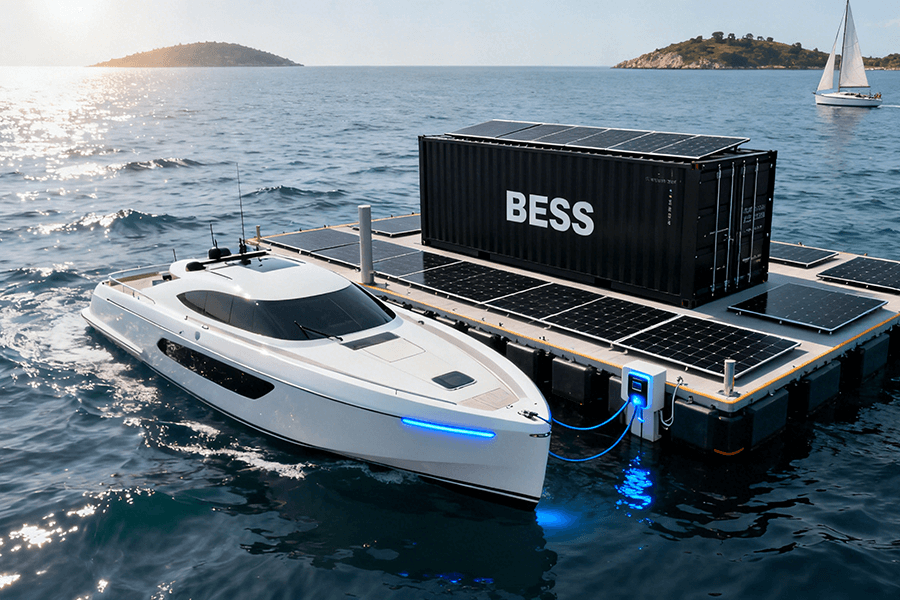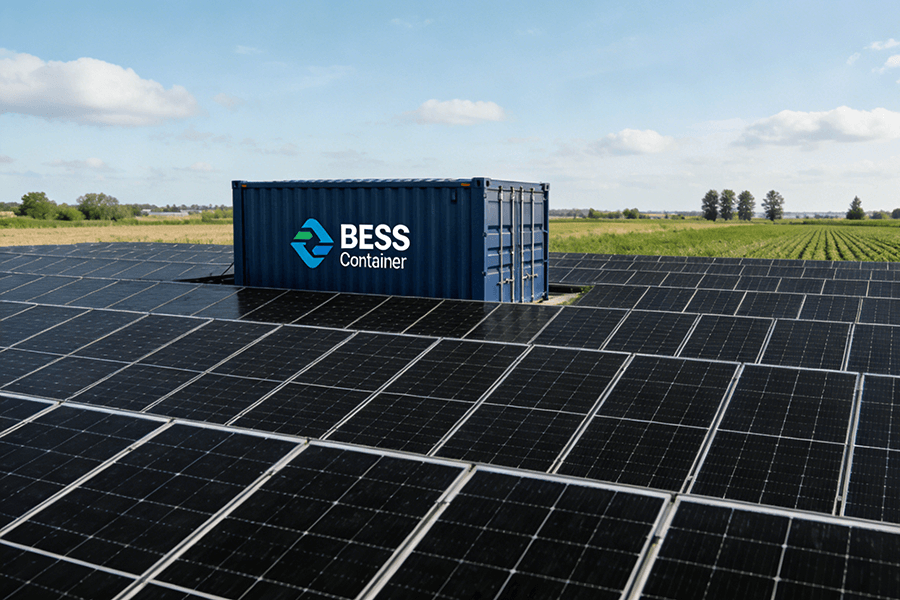
The Power Crisis Facing European Islands
European islands—from the sun-kissed Greek Cyclades to the verdant Azores—grapple with a dual energy dilemma that has persisted for decades. This conundrum not only hampers their sustainable development but also significantly impacts the daily lives of islanders.
Overreliance on Diesel Generators
Islands, due to their geographical isolation, often lack connection to mainland grids. As a result, diesel generators have become the primary source of baseload power for these regions. This heavy dependence on diesel is not only inefficient but also comes with an exorbitant price tag. According to the 2024 European Island Energy Initiative (EIEI) Report, the cost of diesel power for island systems ranges from €0.8 to €1.5 per kWh. In stark contrast, grid-connected European regions enjoy a much lower cost, with prices falling between €0.15–€0.30 per kWh (source: https://www.eie-initiative.eu/publications/2024-island-energy-costs/).
To put this into perspective, consider the small island of Gozo, part of the Maltese archipelago. Here, the annual diesel expenses surpass €20 million. This substantial financial burden is ultimately transferred to the residents, manifesting as higher electricity bills. Moreover, the use of diesel generators contributes significantly to carbon emissions, exacerbating environmental concerns and undermining the islands’ efforts towards achieving carbon neutrality.
The “Mood Swing” of Renewable Energy
Despite the challenges posed by diesel reliance, European islands are blessed with abundant solar and wind resources. However, these renewable energy sources are inherently intermittent, earning them the metaphorical label of having “mood swings.” A sudden cloud cover can reduce solar output by a staggering 70% within just 10 minutes, while calm winds can halve the generation capacity of wind turbines overnight.
This volatility presents a significant challenge for island grids. Unlike large mainland systems, which have the inertia to absorb fluctuations in power generation, island grids are more vulnerable to these sudden changes. As a result, renewable energy sources, despite their potential, have been perceived as “unreliable partners” for ensuring a stable power supply on islands. This unreliability has, in turn, limited the full utilization of these clean energy sources, hindering the islands’ transition towards a more sustainable energy future.
Enter BESS Containers: The Grid’s “Calm Problem-Solver”
BESS containers—self-contained, modular energy storage units—emerge as a promising solution to these long-standing energy challenges. These units can be likened to the “energy babysitters” for islands, playing a crucial role in stabilizing the energy supply.
During periods of high renewable power generation, BESS containers store the excess energy. Then, when demand spikes or renewable generation dips, they release this stored energy, ensuring a continuous and stable power supply. What’s more, BESS containers can stabilize frequencies much faster than any traditional generator, effectively mitigating the volatility associated with renewable energy sources.
Their modular design is another significant advantage. This feature allows for easy deployment, even in the most remote and challenging island locations. Whether it’s a tiny, off-the-grid island or a larger, more populated one, BESS containers can be tailored to meet the specific energy needs of each region, making them a versatile and practical solution for empowering stable and renewable-dominated island microgrids in Europe.
Core Functions of BESS Containers in Island Microgrids
BESS containers deliver three irreplaceable benefits that make them indispensable for island energy transition:
Frequency Regulation & Inertia Simulation: Taming Grid Volatility
Island grids are inherently fragile ecosystems. In Europe, where the standard grid frequency is 50Hz, even a minute 1% deviation can cascade into widespread blackouts, disrupting essential services and tourist experiences. Traditional diesel generators, the mainstay of island power systems, suffer from a critical limitation: they take 5–10 seconds to ramp up or down in response to load changes. In contrast, Battery Energy Storage System (BESS) containers operate at the speed of electronics, responding within milliseconds—a 1,000-fold acceleration compared to diesel counterparts.
The transition to renewable-dominated grids exacerbates another challenge: the loss of rotational inertia. In fossil-fuel power plants, spinning turbines store kinetic energy, providing a natural buffer against frequency fluctuations. Renewable sources like solar and wind lack this built-in stability. BESS containers bridge this gap using advanced control algorithms, mimicking inertia through rapid power injection or absorption. A 2023 study by the University of Lisbon underscores their effectiveness: adding a 10 MW BESS to a 50 MW island grid reduced frequency deviations by up to 50% during sudden load spikes, such as when a large hotel simultaneously switches on 100 air conditioning units. This technical feat translates directly into enhanced grid resilience, safeguarding the daily lives of island residents and the reliability of tourist infrastructure.
Renewable Energy Time-Shifting: From “Peak Waste” to “24/7 Power”
Renewable energy sources exhibit an inherent mismatch between generation and demand. Solar arrays produce surplus power during midday peak hours, while wind turbines may generate little electricity during calm nights. This intermittency, often referred to as “duck curve” phenomena, can lead to significant energy waste as excess power is curtailed to maintain grid stability. BESS containers act as sophisticated “energy fridges,” storing surplus electricity during periods of overgeneration and discharging it when demand outstrips supply.
Consider a typical deployment scenario:
- A 5 MW/20 MWh BESS, suitable for small to medium-sized islands, can capture 8 hours of peak solar output (assuming 5 MW generation over 4 sunlit hours).
- This stored energy provides a crucial safety net during extended cloudy periods, powering 1,500 homes (averaging 3 kWh daily consumption) for 4–5 days. Such time-shifting capabilities not only optimize renewable utilization but also reduce reliance on diesel back-up generation, slashing operational costs and carbon emissions.
Boosting Renewable Penetration: Breaking the “Diesel Trap”
Historically, islands have struggled to exceed 30% renewable energy penetration due to grid stability concerns. Any attempt to increase this share without energy storage risks grid instability, forcing reliance on polluting diesel generators—a cycle known as the “diesel trap.” BESS containers have emerged as the key to unlocking higher renewable integration.
The table below compares key performance indicators from European island grids before and after BESS deployment:
| Metric | Pre-BESS (Diesel-Dominant) | Post-BESS (Renewable-Dominant) | Source |
|---|---|---|---|
| Renewable Penetration | 15–25% | 50–80% | EIEI 2024 |
| Diesel Consumption | 10,000+ liters/day | 2,000–3,000 liters/day | Azores Energy Authority 2025 |
| Annual Fuel Costs | €12–18M | €3–6M | https://www.eie-initiative.eu/ |
| Carbon Emissions | 25,000+ tons/year | 5,000–8,000 tons/year | European Environment Agency 2024 |
These data illustrate a transformative shift: BESS deployment enables islands to double or triple their renewable share while reducing diesel consumption by up to 80%. This not only drives down annual fuel costs by millions of euros but also slashes carbon emissions by over 60%, aligning with the EU’s ambitious climate goals and paving the way for truly sustainable island microgrids.
Real-World Success Stories
Terceira Island (Azores, Portugal): 60% Renewable Penetration
Terceira Island, located in the Azores archipelago of Portugal, has emerged as a remarkable example of sustainable energy transition in recent years. In 2023, the island implemented a groundbreaking energy project by deploying a 15 MW/15 MWh Battery Energy Storage System (BESS), supplied by Fluence, and integrating it with Siemens’ advanced smart grid software. This strategic move aimed to address the island’s heavy reliance on diesel-based power generation and increase the share of renewable energy in its electricity mix.
The impact of this BESS deployment has been nothing short of spectacular. Within just 12 months, Terceira Island witnessed a significant leap in its renewable energy penetration, soaring from a modest 28% to an impressive 60%. This substantial increase in renewable energy usage led to a remarkable reduction in diesel consumption, with a 65% cut in diesel use. The economic benefits are equally staggering, with annual fuel savings now amounting to €14 million. These savings have been redirected towards upgrading the island’s infrastructure, further enhancing the quality of life for its residents and contributing to the island’s long-term sustainability.
The success of Terceira Island’s BESS project serves as an inspiration for other island communities facing similar energy challenges. By leveraging advanced energy storage technologies and smart grid solutions, islands can significantly reduce their dependence on fossil fuels, lower their carbon footprint, and achieve a more stable and sustainable energy future. For more details on this transformative project, you can visit https://www.energy-storage.news/fluence-siemens-bess-powered-microgrid-takes-azores-island-closer-to-a-sustainable-future/.
Ta’u Island (American Samoa): 98% Solar-Powered
Although Ta’u Island is not located in Europe, its remarkable energy transition story offers valuable insights and serves as a blueprint for island communities around the world. Since 2024, Ta’u Island has been running predominantly on 98% solar power, achieved through a combination of a 2.6 MW solar installation and a 6 MWh BESS. This significant shift from traditional diesel-based power generation has had far-reaching positive impacts on the island.
Prior to the implementation of the solar and energy storage project, Ta’u Island burned approximately 110,000 gallons of diesel annually. Thanks to the successful integration of solar energy and energy storage, this number has now dropped to near zero. The project has not only eliminated the island’s reliance on imported fossil fuels but also resulted in substantial cost savings. Ta’u Island now saves $1.6 million per year in fuel costs, which can be invested in other critical areas such as education, healthcare, and community development. Additionally, the project has made a significant contribution to environmental protection by eliminating 4.5 million pounds of CO₂ emissions annually.
The success of Ta’u Island’s solar and energy storage project highlights the immense potential of renewable energy and energy storage technologies in powering island communities sustainably. It demonstrates that with the right combination of technology, planning, and community support, islands can achieve high levels of renewable energy penetration and become self-sufficient in their energy needs. For more information on this inspiring project, you can refer to https://www.nrel.gov/news/program/2024/tau-island-solar-storage-microgrid-achieves-98-renewable-penetration.html.
Challenges & Proven Solutions
BESS containers aren’t without hurdles—but innovative fixes have emerged:
Harsh Island Environments: Fighting Salt-Spray Corrosion
The corrosive nature of salt-laden air poses a significant threat to Battery Energy Storage System (BESS) containers deployed on islands. Salt particles in the atmosphere accelerate the degradation of electrical components, potentially shortening the system’s lifespan by 30–40%. To combat this challenge, the industry has developed multi-faceted solutions:
Corrosion-Resistant Materials: The choice of construction materials plays a pivotal role in enhancing durability. For instance, using 316L stainless steel for frames provides superior resistance to chloride-induced pitting corrosion compared to standard steel grades. Aluminum alloys, particularly those with high zinc and magnesium content, are favored for enclosures due to their natural oxide layer that acts as a protective barrier against salt spray.
Advanced Coatings: Surface treatment technologies have advanced significantly in recent years. Polyurethane and ceramic coatings are now widely applied to internal components to form a hydrophobic shield. A 2024 study by the Norwegian University of Science and Technology (NTNU) demonstrated remarkable efficacy of these coatings. In simulated salt-spray environments, components with advanced coatings showed a 70–80% reduction in corrosion rates, as detailed in their research published at https://doi.org/10.3390/coatings14020247.
Limited Space & Logistics: Compact Design + Local Partnerships
Islands often face constraints in available land area, necessitating a paradigm shift in BESS container design. Manufacturers have responded by developing space-efficient models, such as Tesla’s “high-density” containers. These 20-foot units pack a 3 MWh capacity, delivering 50% more storage per square meter compared to conventional designs. This compact footprint allows for installation in urban areas or sites with limited space availability.
Logistical challenges also require tailored solutions:
Strategic Shipping Partnerships: Collaborating with local maritime operators optimizes transportation efficiency. For example, in Greece, partnerships with Blue Star Ferries enable BESS containers to be transported during off-peak seasons. This approach not only reduces shipping costs but also ensures faster delivery, minimizing the time from manufacturing to deployment.
Pre-positioned Spare Parts: To minimize maintenance downtime, a hub-and-spoke model has been adopted. Key components like batteries and inverters are pre-stocked at mainland hubs close to island clusters. In the Greek archipelago, Crete serves as a central storage location, allowing technicians to quickly access replacement parts and perform repairs, thereby maintaining system reliability.
Conclusion: BESS Containers—The Key to Island Sustainability
European islands can’t achieve net-zero without BESS containers. They turn intermittent renewables into reliable power, slash diesel costs, and free islands from energy dependency. As the EIEI notes, 75% of European islands will deploy BESS by 2030—this isn’t a trend, it’s a necessity.
Our Role at Maxbo Solar
At Maxbo Solar (www.maxbo-solar.com), we’re not just suppliers—we’re partners in island energy transition. Our BESS containers are engineered for European islands:
- Salt-Resistant Design: All units use 316L stainless steel and Norweigan-developed anti-corrosion coatings.
- Modular Flexibility: Choose from 5 MW/10 MWh to 20 MW/40 MWh systems—scalable as your renewable capacity grows.
- Local Support: We maintain spare parts hubs in Lisbon (Azores), Athens (Greek Islands), and Madrid (Canary Islands) for 24/7 maintenance.
We’ve already helped small islands like Portugal’s Pico achieve 52% renewable penetration—and we’re just getting started. With Maxbo Solar, your island’s journey to clean, stable, and affordable power is simpler than you think.






